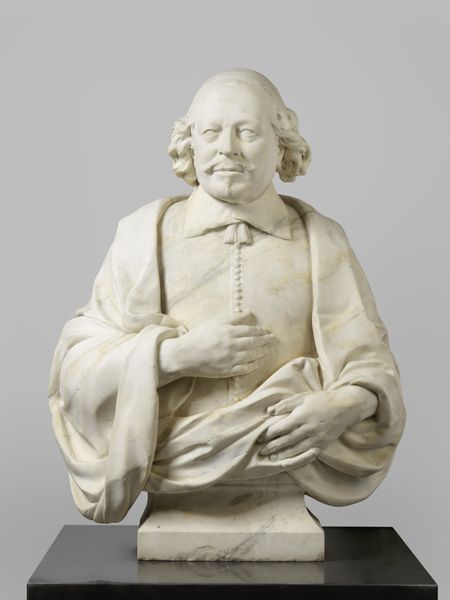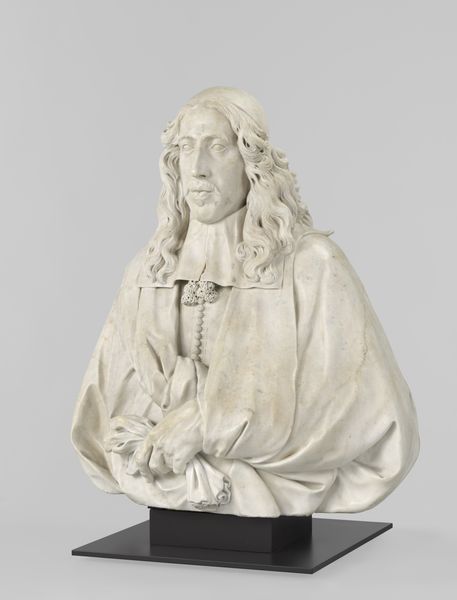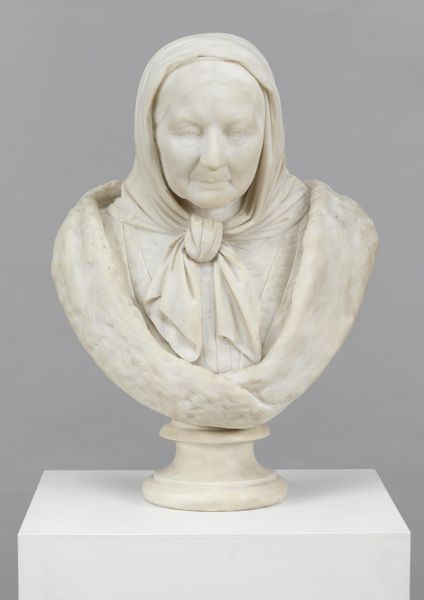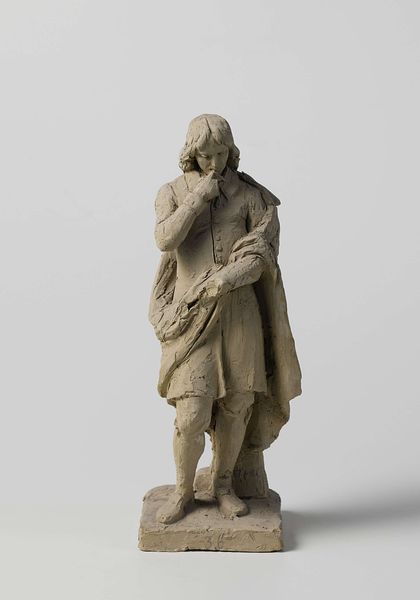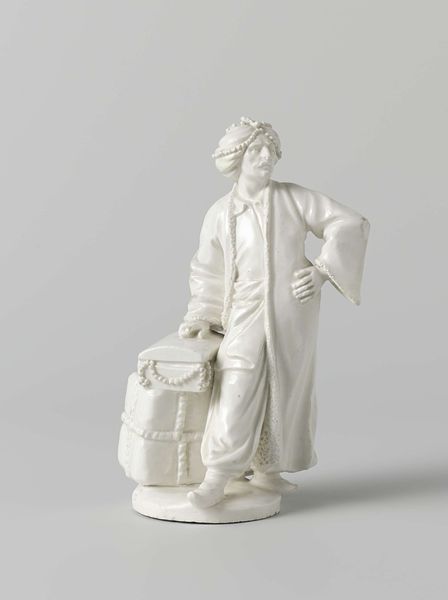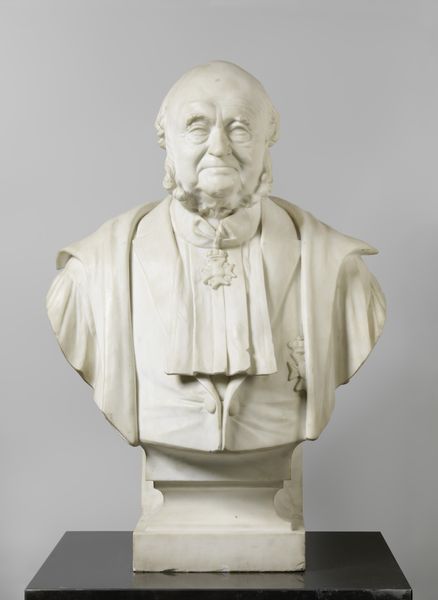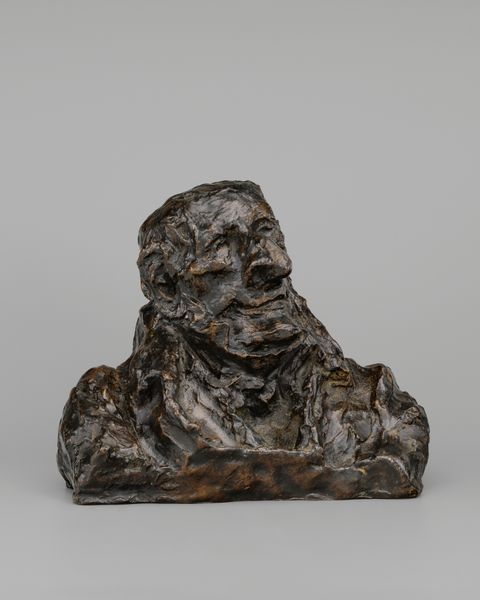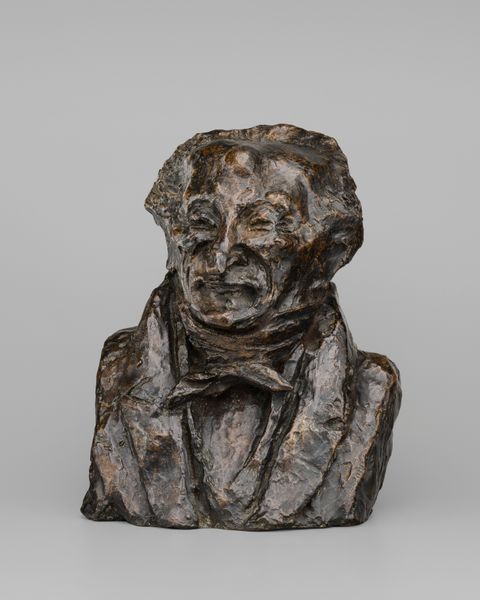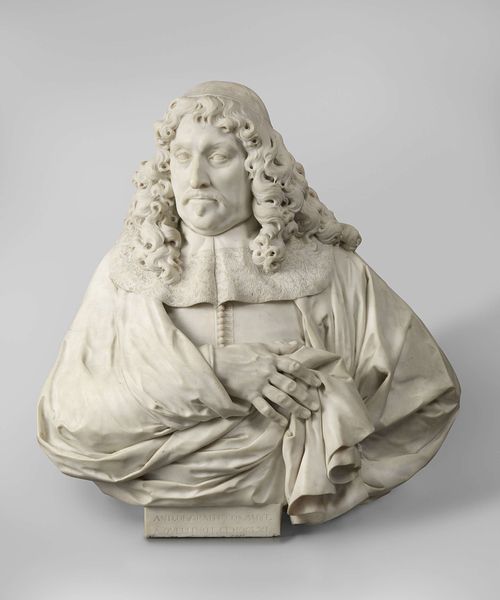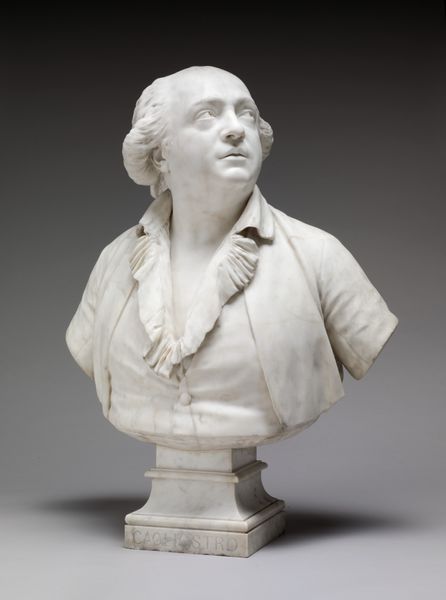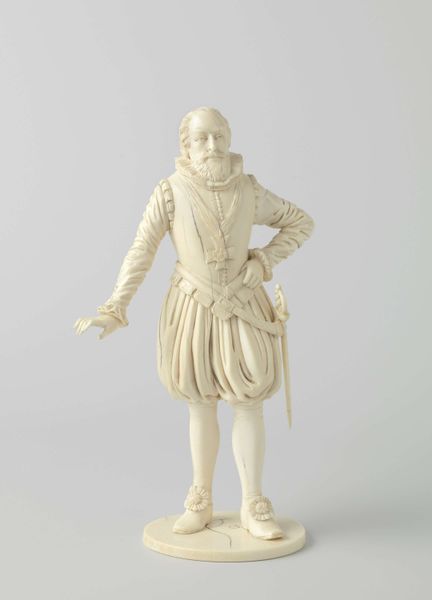
sculpture
#
portrait
#
baroque
#
sculpture
#
sculpture
Copyright: Rijks Museum: Open Domain
Curator: Let's spend a few minutes discussing this fascinating sculpture, a portrait bust rendered in a pale stone, created in 1663 by Bartholomeus Eggers. It's titled "Portrait of Gerard Schaep van Cortenhoeff." Editor: Oh, my first thought? Serene power. Look at the man’s posture, those knowing eyes, the subtle curl of the moustache. He's got a quiet confidence that just emanates from the stone. Curator: Precisely! And consider the moment in which it was created. We're talking about the Dutch Golden Age. Men like Gerard Schaep were central figures in trade and politics. It’s highly likely Eggers aimed to capture not only a likeness but a certain status and authority. Editor: You can totally see it! The way his robe drapes, so carefully composed, it’s less about comfort and more about presenting a formidable image, isn't it? Even those clasped hands seem like he is ready to strike a bargain. It all adds to that air of self-assuredness. But, tell me, is it just me, or does the man seem a bit…reserved? Curator: Perhaps that's a reflection of the prevailing social expectations of the time. A stoic leader was considered ideal. In any case, a closer analysis may offer clues to understand that subtle air you mentioned. But it seems that Bartholomeus Eggers, positioned within the Baroque tradition, uses this tension between formality and expression to explore aspects of gender, race, and class in the Dutch Golden Age. Editor: You're right, there is a lot of cultural expectation in it. Still, even with its restraints, there’s this undeniable human quality the sculptor manages to reveal. Perhaps he wasn’t simply sculpting stone but something deeper? Curator: That’s what makes art history so fascinating. Thank you for those insights! It shows just how a Baroque bust could spark different interpretations on status, wealth, and inner complexities. Editor: Thanks to you! I never thought I'd get so emotionally invested in a stony, moustached 17th-century man.
Comments
rijksmuseum about 2 years ago
⋮
Gerard Schaep was one of the conservative Calvinists among the Amsterdam regents. He was held in high esteem for his many years of public service: he was elected mayor a total of eleven times and served as the Republic’s envoy extraordinary to Denmark and Sweden. This lofty status warranted a monumental bust portrait in marble.
Join the conversation
Join millions of artists and users on Artera today and experience the ultimate creative platform.
